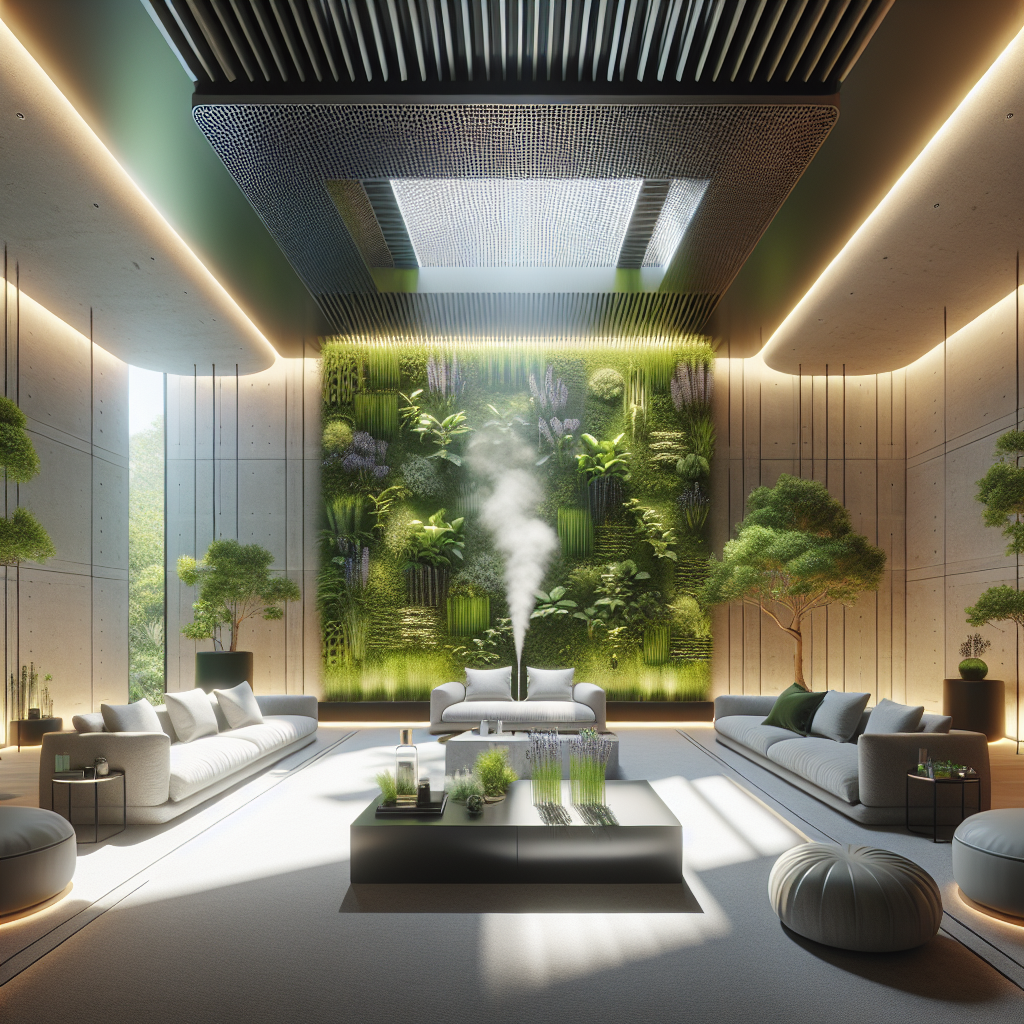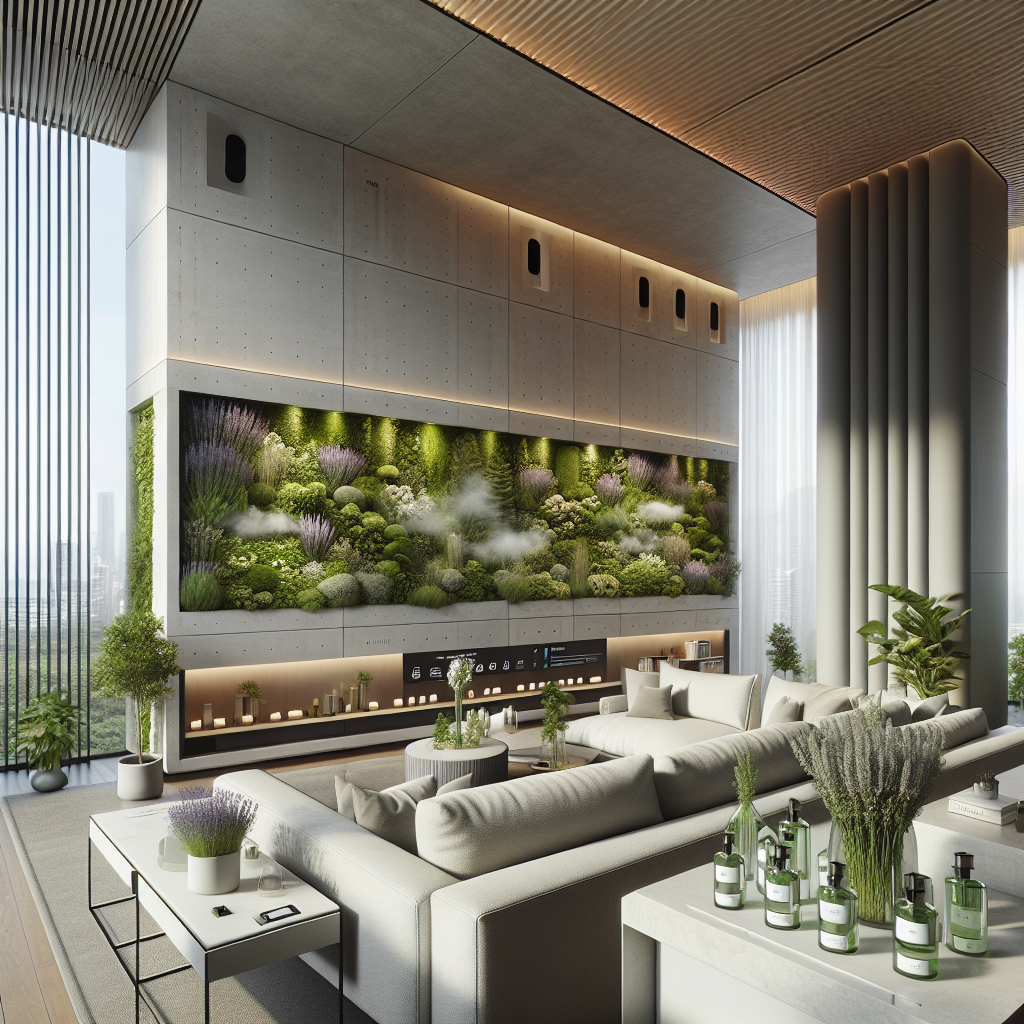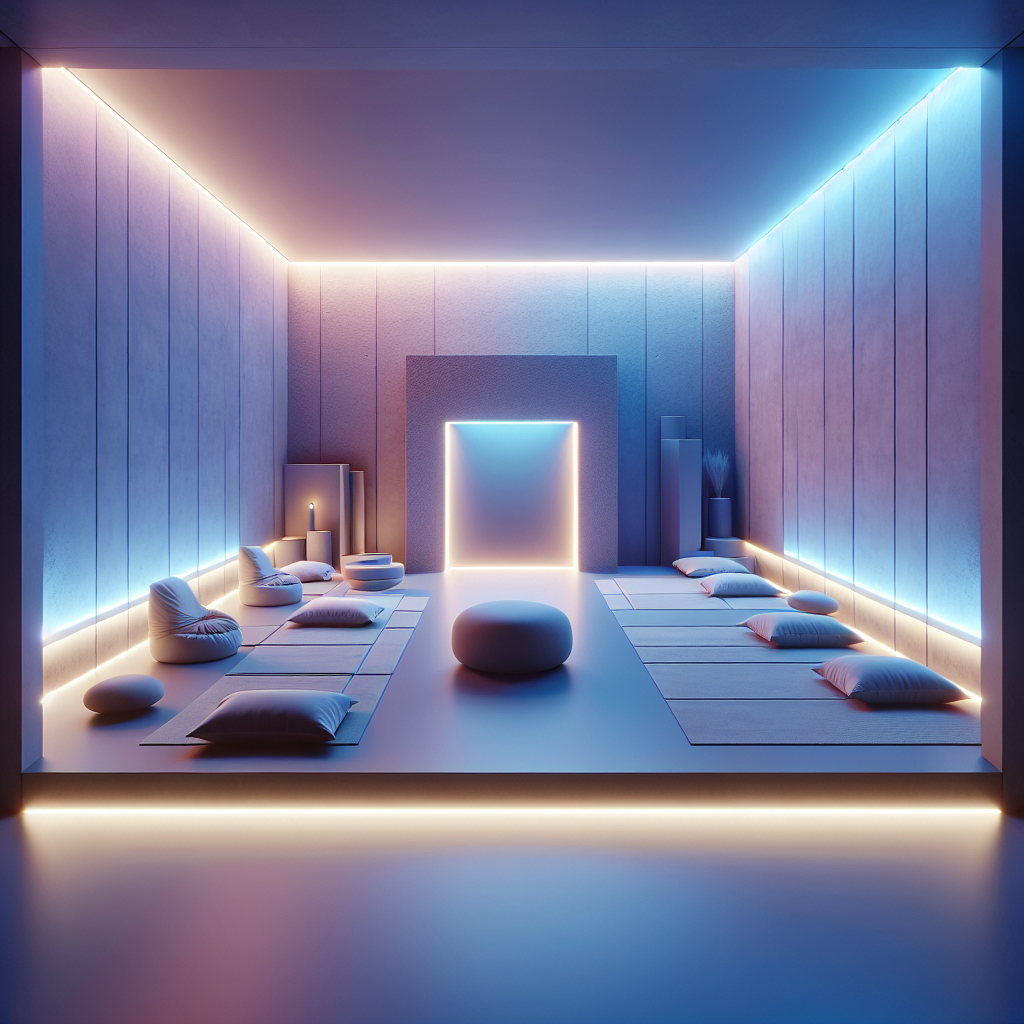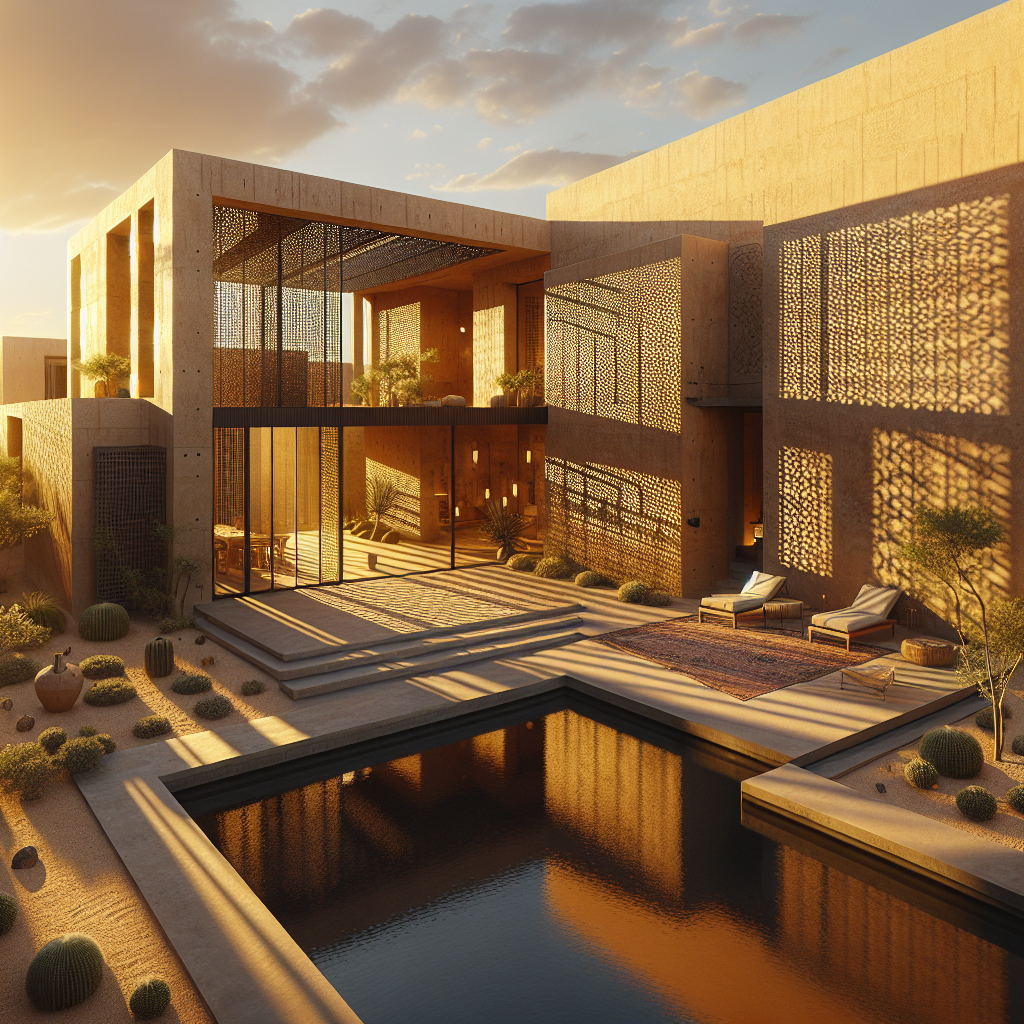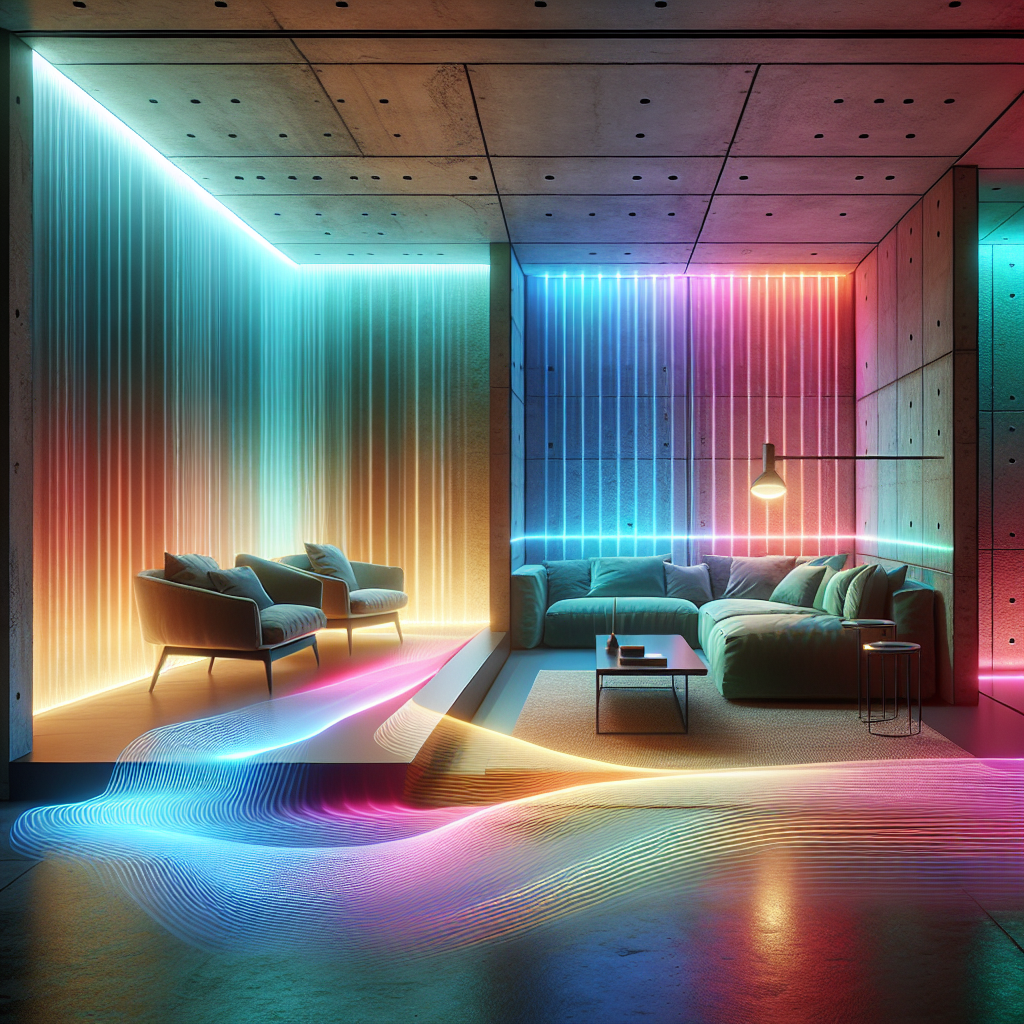Fragrant architecture embedded essential oil diffusers in structural elements
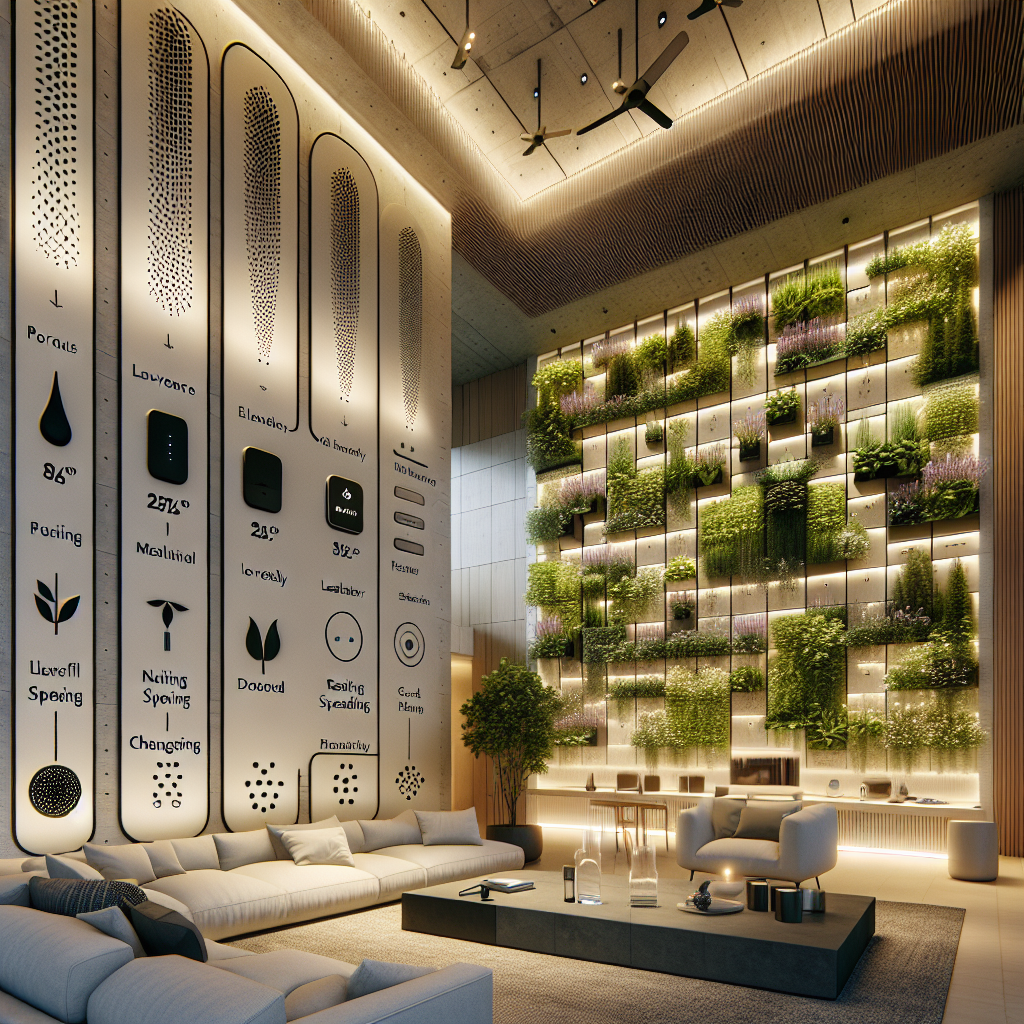
The Rise of Fragrant Architecture: Integrating Essential Oil Diffusers into Structural Elements
In the ever-evolving world of architecture and interior design, a new sensory dimension is emerging—one that goes beyond the visual and tactile to engage our sense of smell. The concept of fragrant architecture, where essential oil diffusers are seamlessly embedded into structural elements, is redefining how we experience built environments. This innovative approach is not just about aesthetics; it is about creating immersive, multi-sensory spaces that enhance well-being, productivity, and emotional connection.
The Science Behind Scent and Space
Our sense of smell is deeply linked to memory and emotion. Studies have shown that certain scents can reduce stress, improve focus, and even boost mood. By integrating essential oil diffusers into architectural elements such as walls, ceilings, and flooring, designers can craft environments that subtly influence human behavior and well-being.
For instance, lavender and chamomile are known for their calming effects, making them ideal for residential spaces and wellness centers. Meanwhile, invigorating scents like citrus and peppermint can enhance concentration in workspaces. The ability to control and customize these scents within a building’s infrastructure offers a new layer of personalization in design.
Innovative Applications in Architectural Design
Leading architects and designers are already experimenting with integrated scent diffusion in various ways. Some of the most compelling applications include:
- Smart HVAC Systems: Modern ventilation systems can be equipped with essential oil diffusers that distribute fragrance evenly throughout a space, ensuring a consistent olfactory experience.
- Porous Building Materials: Innovative materials such as engineered wood and porous concrete can be infused with essential oils, allowing them to release fragrance gradually over time.
- Furniture and Fixtures: From scented upholstery to aroma-infused light fixtures, designers are embedding fragrance into everyday objects to create a more immersive experience.
- Interactive Spaces: Museums, retail stores, and hospitality venues are using scent to enhance storytelling and brand identity, making spaces more memorable and engaging.
Biophilic Design and the Role of Scent
The integration of scent into architecture aligns perfectly with the principles of biophilic design, which seeks to connect people with nature through built environments. Just as natural light, greenery, and organic materials contribute to a sense of well-being, so too does scent.
Imagine walking into a corporate office that subtly diffuses the aroma of pine and cedar, evoking the tranquility of a forest. Or stepping into a spa where the air is infused with eucalyptus and rosemary, enhancing relaxation and rejuvenation. These sensory experiences create a deeper connection between individuals and their surroundings.
The Sustainability Factor
As the design industry moves towards net-zero and sustainable practices, the use of natural essential oils presents an eco-friendly alternative to synthetic air fresheners. Many essential oils are derived from renewable sources and can be diffused without harmful chemicals, aligning with the growing demand for healthier indoor environments.
Moreover, some architectural projects are exploring the use of aromatic plants within structural elements. Green walls infused with lavender, basil, or mint not only provide a natural fragrance but also contribute to air purification and biodiversity.
Challenges and Considerations
Despite its many benefits, the integration of scent into architecture comes with challenges. One of the primary concerns is individual scent preferences. What one person finds soothing, another may find overwhelming. To address this, designers are incorporating customizable scent systems that allow users to adjust fragrance intensity or even select preferred scents.
Additionally, the longevity of scent diffusion in materials is still being explored. While some porous materials can hold fragrance for extended periods, others may require periodic reapplication. Research into microencapsulation technology—where essential oils are enclosed in tiny capsules that release fragrance over time—offers promising solutions.
The Future of Fragrant Architecture
As the boundaries between technology, wellness, and design continue to blur, the potential for fragrant architecture is vast. Future developments may include AI-driven scent diffusion systems that adapt to occupants’ moods or smart materials that release fragrance in response to environmental changes.
In the hospitality industry, hotels may offer guests personalized scent experiences, allowing them to choose a fragrance profile for their room. In healthcare, hospitals could use calming scents to reduce patient anxiety. Even urban spaces could benefit, with fragrance-infused public installations enhancing the sensory experience of city life.
Final Thoughts
The integration of essential oil diffusers into structural elements is more than just a trend—it is a shift towards holistic and sustainable design. By engaging the sense of smell, architects and designers are crafting spaces that are not only visually stunning but also emotionally resonant. As research and technology advance, the possibilities for fragrant architecture will continue to expand, transforming the way we experience the built environment.

